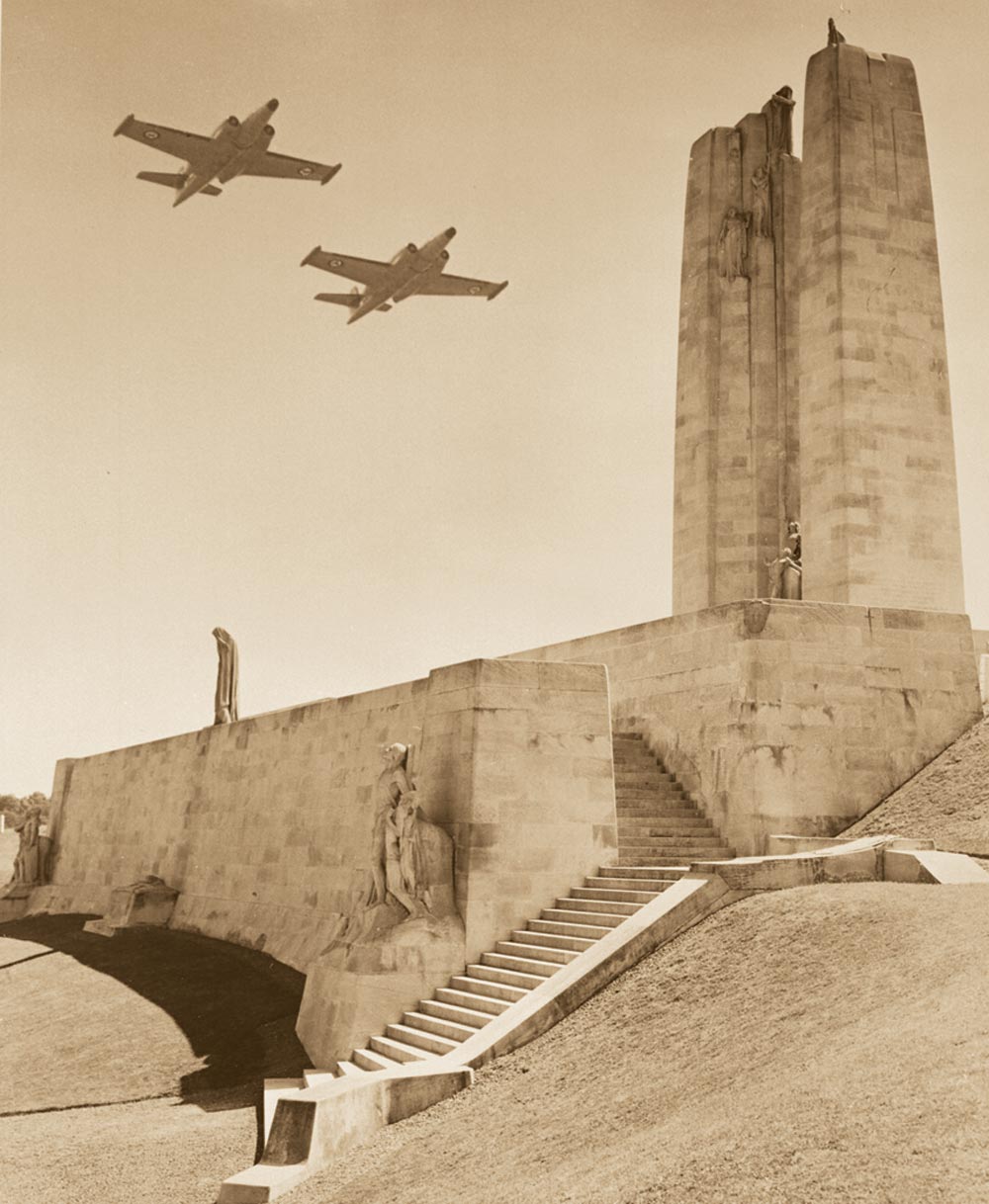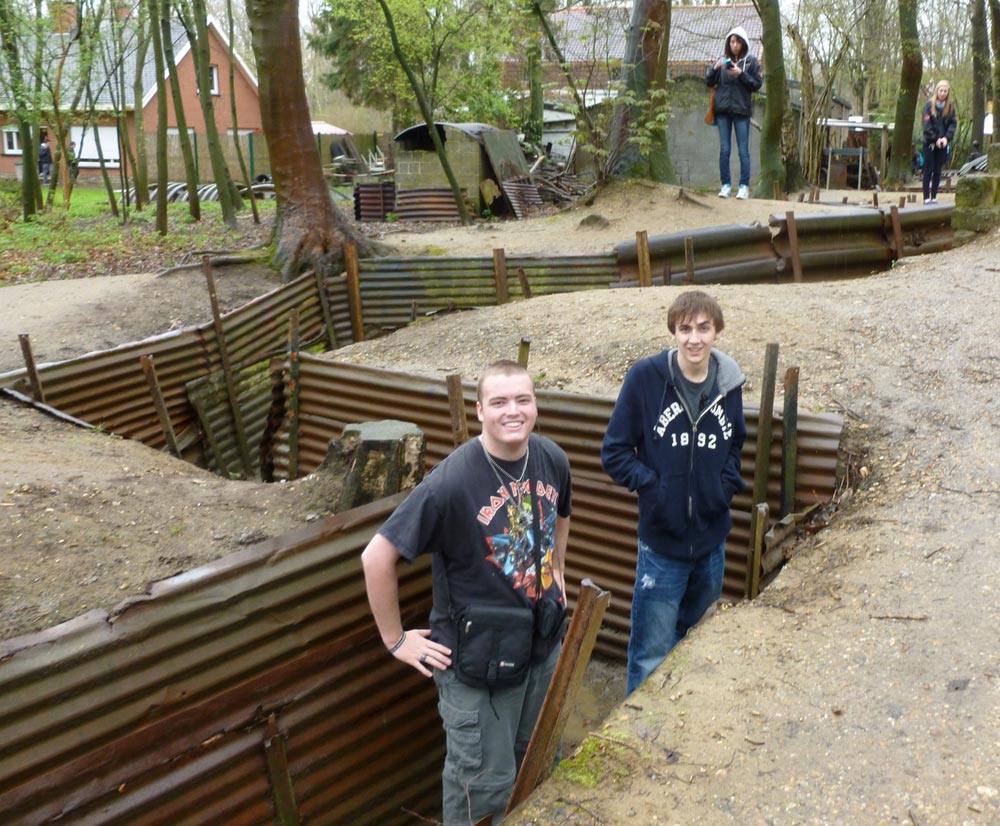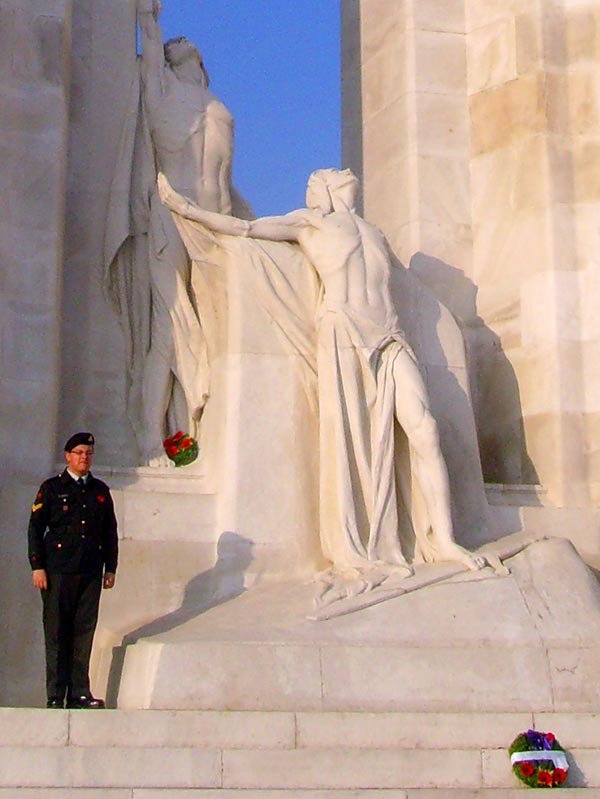
Stag Special
In the weeks surrounding the another anniversary of the battle and victory of Vimy Ridge on April 9, 1917, thousands of students and Cadets from across Canada travelled to the historic site in France to commemorate the Canadian troops who fought and who gave their lives during the First World War.
The following are stories of two of these Brandon students. One has an historical connection to the great battle. One does not. These are their experiences.
More than 4,000 students looked on as MWO Dustin Cotton silently followed a procession of young people up the limestone steps of the Vimy Ridge monument.
“We marched up to the top of the monument, put the torch in its place and stood and looked out at the massive sea of some 10,000 people looking up and staring at us. I was stunned,” said MWO Cotton, a 12th grader at Vincent Massey High School. “I had to stop and think about where I was right then. I could be in no better place than where I was at that exact moment. It was surreal. I was standing on hallowed ground.”
The piper played the bagpipes, flags were waving, people sang songs, and poems were read in the bone-chilling rain. It was much like the cold, wet day of April 9, 1917, when Canadian soldiers marched up Hill 145 exactly 106 years earlier. MWO Cotton, of the 2520 Royal Canadian Army Cadet Corp – 71 Battery Royal Canadian Artillery Cadets in Brandon, was one of 26 students representing their province or territory from all across Canada as honorary torchbearers at the anniversary of the battle of Vimy Ridge.
Many of the participants were high school students who had been contacted by the tour group and asked if they would like to be a part of the tribute. When asked by his European history teacher if he would be interested in being part of the torch procession, MWO Cotton jumped at the chance without hesitation.
“I wore my cadet uniform and so I represented my Cadet Corps, my City of Brandon, my school, Manitoba, the Canadian Armed Forces and my country of Canada on this incredible world stage event,” he said. “So, out of 4,000 students that were there and to be one of 26 torchbearers, that was pretty special.”
The monument overlooks the rolling hills of the Douai Plain in northern France, approximately 175 kilometres north of Paris. The land was given to Canada by France in 1922 in gratitude for the sacrifices Canadians made in the Great War and for their perseverance and ultimate victory achieved in capturing Vimy Ridge in 1917. Construction on the memorial began in 1925 and was completed in 1936.
Inscribed on the enclosing walls are the names of the 11,285 Canadians who were killed in France and whose final resting places are unknown. Within a 20-kilometre radius of the towering pillars are more than 7,000 Canadian soldiers buried in 30 war cemeteries.
“I felt like I was walking in a place that was very sacred and I didn’t want anything to ever disturb it,” MWO Cotton recalled. “Especially when I looked at the statue of Mother Canada on the monument, crying not only for the soldiers who died at Vimy, many of whom were my age, but also for the Canadian soldiers who died anywhere else in any country, at any battle Canada was part of, and for those who continue to serve today and those in the future who will serve. It brought tears to my eyes.”
“The trip to France and to this incredible place just made me love my country and the Canadian Forces even more,” he said. “It gives me more drive to go out and do a service for my country like those young men did. I am extremely grateful for the opportunity to be able to actually go to Vimy Ridge and take part in the way I did.”
It was a war unlike any other, revolutionized by technology and powerful weaponry such as machine guns, poison gas, mortar shells and war planes.
Out on the battlefield a soldier’s only protection was to take cover in the many miles of trenches and underground tunnels, waiting there for the order to go “over the top” and into an onslaught of enemy artillery fire, mud, barbed wire and mortar shells. Soldiers had to cross a narrow strip of land between the opposing trenches, called “No Man’s Land” when they would go over the top edge of a trench to launch an attack.
What makes the taking of Vimy Ridge unique is that it was the first time the Canadian 1st, 2nd, 3rd and 4th Divisions were united, bringing together more than 100,000 men to attempt to do what the British and French forces had tried and failed to accomplish from 1914 to 1916.
The Canadian Corps had dug 11 underground tunnel-ways including huge craters filled with explosives to aid in the movement and protection of the troops. By the time the attack had begun on April 9, 1917 at 5:28 a.m., 21 miles of signal cable and 66 miles of telephone wire had been buried on the battlefront.
The Canadian plan called for a massive and prolonged artillery barrage while keeping an exact pace in front of the Canadian troops moving across this “No Man’s Land.” By the fourth day, April 12th, their plan proved to be successful as the Canadians controlled the entire ridge.
This is what teenager Michael Brooks was thinking about when he stood in the trenches on the Canadian side of “No Man’s Land” during a visit overseas on March 29, 2012.
“We went to the Canadian Reserves frontline tunnels. We weren’t allowed to go to the German line because there could still be ordinances, or unexploded artillery weapons like land mines, from a century ago,” he recalled. “To think that my great-great-grandfather was there, and his father was there, left me speechless. They both fought at Vimy and they both survived it.”
Bdr Brooks, from 2520 RCACC – 71 Bty RCA Cadets, pondered the great risk his ancestors took in joining the Canadian Army and the Great War.
“When my great-great-great-grandfather and his son came over from Poland, they loved Canada so very much that when the Great War began in 1914 they both joined up,” he said. “But the problem was that they had the German last name, Brȕckes. They were forced to change their last names, so that if they were ever captured by German soldiers, they wouldn’t be suspected of being spies and tortured and killed. That’s when our last name was changed from Brȕckes to Brooks.”
Bdr Brooks, with fellow students from Neelin High School, travelled to France during Spring Break. The students travelled to various historic sites, such as the trenches at the town of Arras, as well as the Vimy Ridge National historic site, about 10 kilometre further north.
“As I looked up at the huge monument with its great pillars I was speechless the entire time. It was all about remembrance. I felt sorrow for the people who died there but I also felt proud for the things that they did,” he said. “If you ever get the chance to go to France, to go to Vimy Ridge, to Juno [Beach], or to any of the military cemeteries anywhere in Europe, go. Don’t miss the chance. You won’t regret it. I promise you that.”



